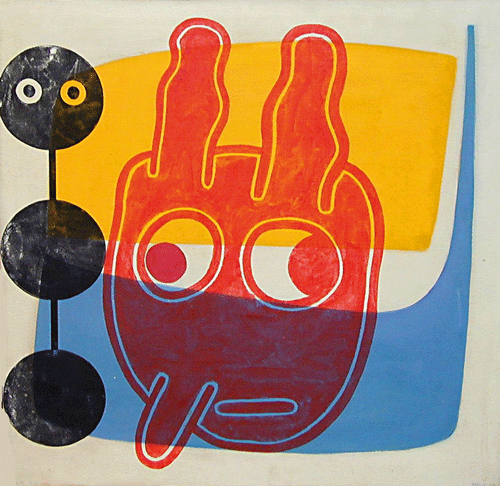Ray Johnson
Galerie Aurel Scheibler
Galerie Aurel Scheibler

When an artist achieves posthumous fame due to a documentary film, there’s the threat his biography will upstage his work. That might be the case for the American artist Ray Johnson, who was born in 1927, committed suicide on a Friday the 13th in 1995 and was immortalized in James Walters’s film How To Draw a Bunny (2002). In light of this fate, it was a special pleasure to see an ensemble of Johnson’s works in this small, museum-quality exhibition.
One striking aspect remains the raw materials in the collages, montages and assemblages: a machine-written text over a magazine illustration (all works Untitled, undated); old-fashioned portraits of Hollywood stars placed alongside large advertising slogans; a small, barely altered black and white comic strip from an American newspaper – all in all, the very graphic universe we know as a source of Pop art. Johnson ran with that scene in 1960s New York, but he managed to keep a certain distance. The irony in his work and his often unpredictable behaviour were not always conducive to building a career.
Also astonishing was the small size of Johnson’s formats. The best works of the inventor of Mail Art could fit into an envelope and be sent for just a few cents. In many cases, one had to get close to the frame to see where exactly the artist had applied his ballpoint pen. Or to learn, in six photographic vignettes, that a child drinks ‘a glass of gin a day’ and that a naked baby is clearly ‘in need of clothes’. The small format fosters a certain familiarity – an invitation to enter the dialogue between the visual fragments. Johnson sent out his scraps of paper in the hope that – multiplied, processed and manipulated by the addressee – they would eventually come back to him. And some of the material in the show should be considered, not as finished work, but as art in the making, as a game without rules – which makes it all the more touching.
Johnson’s works are proof of a dilettante genius. It is not a matter of spending hours finding impressive motifs, meticulously cutting them out and combining them into a unique image. Instead, his oeuvre is about linking, often intuitively, several visual components with simple adhesive tape.
Far removed from Max Ernst’s sophisticated technique or John Stezaker’s graphic radicalism, what we find here are spontaneity, humour, minimalist thrift and endless dialogic playfulness. In one of his collages, the combination of a found drawing of a stork with a photograph of a modern art museum recalls the way art works are often delivered and set free like babies, cast into alien kindergartens with abstract painting on overly white walls. Ray Johnson was a crazy character who tried to get his works into museums through the mail. And now, they have arrived, in both museums and smaller galleries – albeit as orphans.
Translated by Nicholas Grindell
















